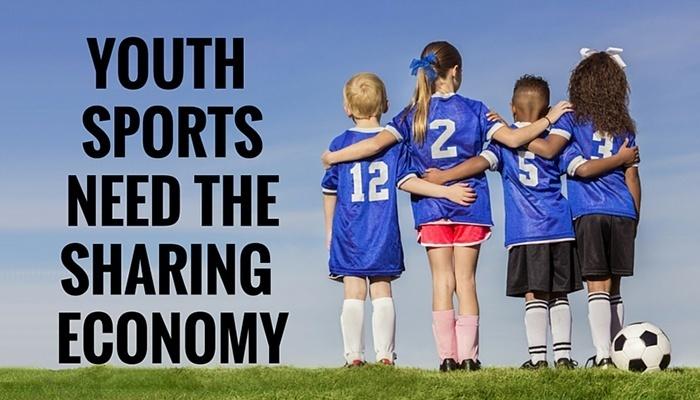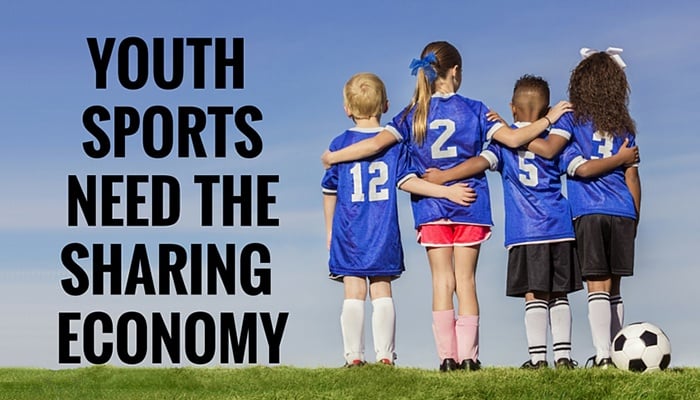
With the cost of playing sports on the rise, many children from low-income families have limited access to organized leagues. Equipment, transportation and private coaching costs have made competing in many sports extremely expensive. The simple days of kids playing on vacant fields has become largely replaced by highly organized leagues that utilize facilities and areas often restricted for general use. As a master’s student in sport management and an advocate for the sharing economy, I’m making it my goal to approach this problem with new ideas.
Participation in sports during childhood and adolescence is associated with physical, emotional, social and educational benefits that can last into adulthood. Here are the facts from Project Play:
- Regular physical activity helps build and maintain healthy bones, muscles and joints, helps control weight and reduce fat, and delays or prevents the development of high blood pressure
- Organized sports activity helps children develop and improve cognitive skills
- Sports can positively affect aspects of personal development in young people, such as self-esteem, goal-setting and leadership
- High school athletes are more likely than non-athletes to attend college
Despite these immense benefits, the costs of participating in youth sports are becoming increasingly prohibitive. On average, in the US, parents spend $671 per year on youth sports and at least 1 in 5 spends over $1,000 per child annually. One dad kept track of every sports related expense for his three children and his results were astounding. In 2011, he spent a whopping $11,740! That is more than half of some household’s annual incomes!
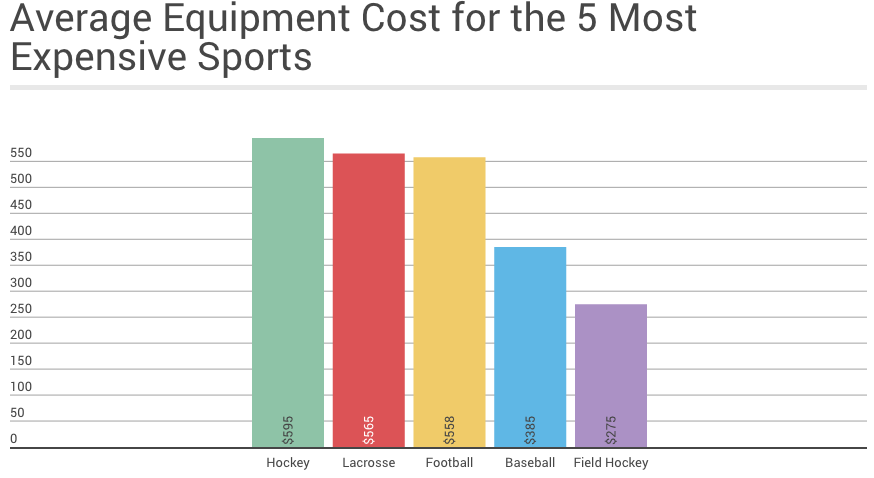
A survey by espnW and The Aspen Institute Project Play showed that in 2014, 70.3% of parents had concerns that the cost of youth sports were too expensive. So who can afford to spend this kind of money? Their graph shows the majority of kids participating in major US sports that year were from families with an annual household income over $100k. Low-income children were minority participants in every sport.
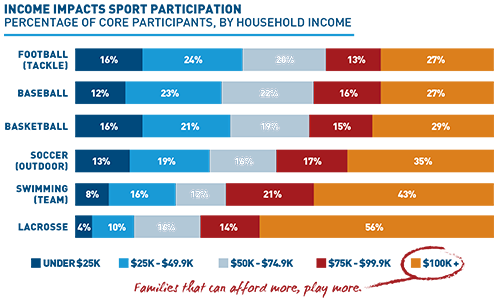
Even “less expensive” sports often present a significant cost barrier for low-income families. These high costs appear to be having a detrimental effect on the number of children participating in sports. In a study conducted by the Sports & Fitness Industry Association (SFIA), 44.7% of youth ages 13-17, and 34.7% of children 6-12, were active three times a week in sports in 2007. By 2014, those numbers dropped to 39.8% and 26.9%, respectively.
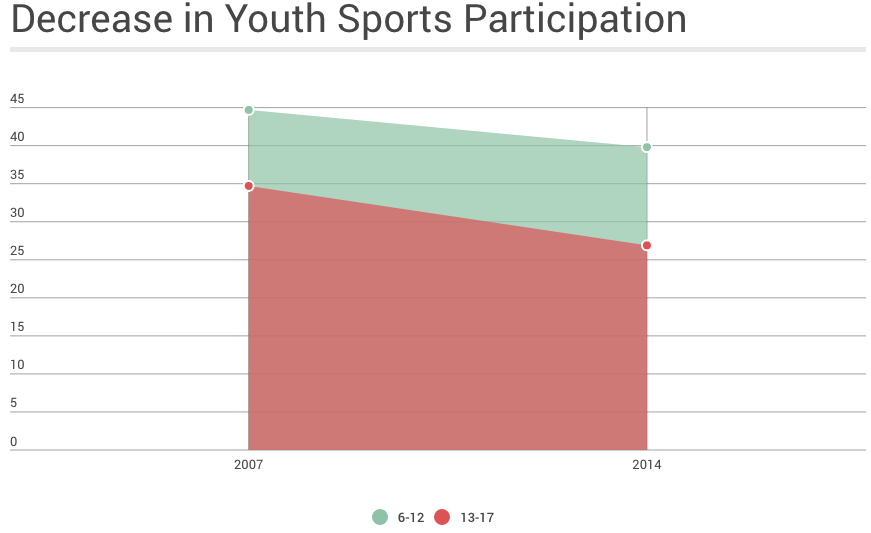
With some US experts predicting a slip into economic recession in 2016, our society needs to come together to address these youth sports accessibility problems. The sharing economy has already proven effective for mitigating costs in other markets, such as transportation, lodging and equipment rental. Here are three marketplace ideas that can potentially make youth sports more affordable.
Used Gear Marketplace
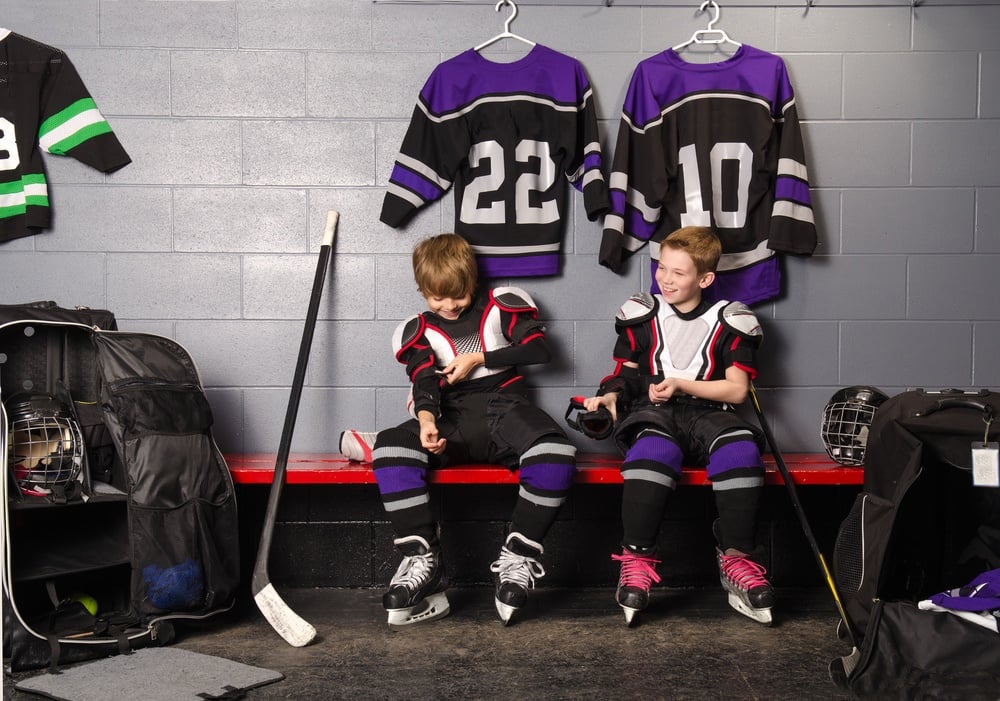
In the last decade, many metropolitan areas have seen the rise of the peer-to-peer economy, which enables people to share their underutilized assets directly with one another. There are a few marketplaces that already exist within the space of used sports equipment. StokeShare is an established company that provides a platform for people to rent each other’s action sports gear. This peer-to-peer marketplace has created a model where renters save money, listers make “new” money, and equipment that would otherwise be sitting idle or thrown away gets a new life.
StokeShare is also a perfect example of how the sharing economy can help sports flourish in underserved communities. Their One Watershed initiative partners with nonprofits to provide gear, sports mentorships and sustainability education to low-income and at-risk youth. By connecting kids with the outdoors, they promote a lifelong commitment to preserving the wild places we play in.
We must rethink the way we consume and control equipment in order to give others access to the things we hold dear. Adapting this peer-to-peer model to mainstream youth sports can tap into an abundant supply of underutilized assets. When players, teams, leagues and organizations get new athletic equipment, they can donate or re-sell their lightly used equipment instead of tossing it or storing it in a shed. A marketplace could connect low-income families with these suppliers and get more kids falling in love with sports.
Ridesharing marketplace
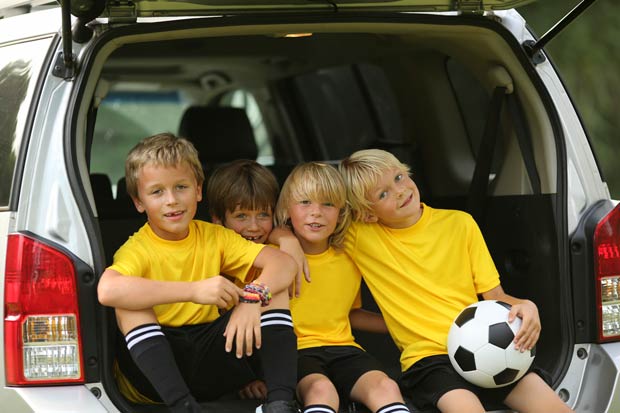
Another expense that could be averted is that of transportation. Not only does it cost parents money to drive their kids to and from practices and games, it also costs them time. For a parent that might work two jobs, the inability to drive across town might be the only thing stopping their child from playing a sport.
The story of Danae Austin exemplifies this problem. Her school district was suffering from budget cuts and eliminated the late-afternoon bus. No one could pick her up or give her a ride home from soccer practice, and she had no money for public transportation. At 14, her only options were to walk several miles home on dark streets or quit the team. If it weren’t for an organization called Sports in Schools funding her public bus passes for the season, Danae would have had no choice but to quit.
A ridesharing system could provide a potential solution to this problem. Some companies have already attempted to alleviate this pain point. Shuddle was the “Uber for kids” but couldn’t raise its next round of funding and recently closed its doors. Since then, companies like Zum, Kango and HopSkipDrive have started their engines to stake a claim in the space. But with trust and safety being a huge concern for parents, these new startups might soon realize the same fate as Shuddle.
However, community is where trust and safety flourish. SF Casual Carpool started back in the 1970’s and has served thousands of riders for free throughout the East Bay and San Francisco. It’s a grassroots network of people looking to use the carpool lane on their morning commute, who pick up passengers looking for an alternative to driving or public transit. If there was a marketplace to connect parents and community members that were willing to carpool to sporting events, many more children would have the opportunity to participate.
Coaching marketplace
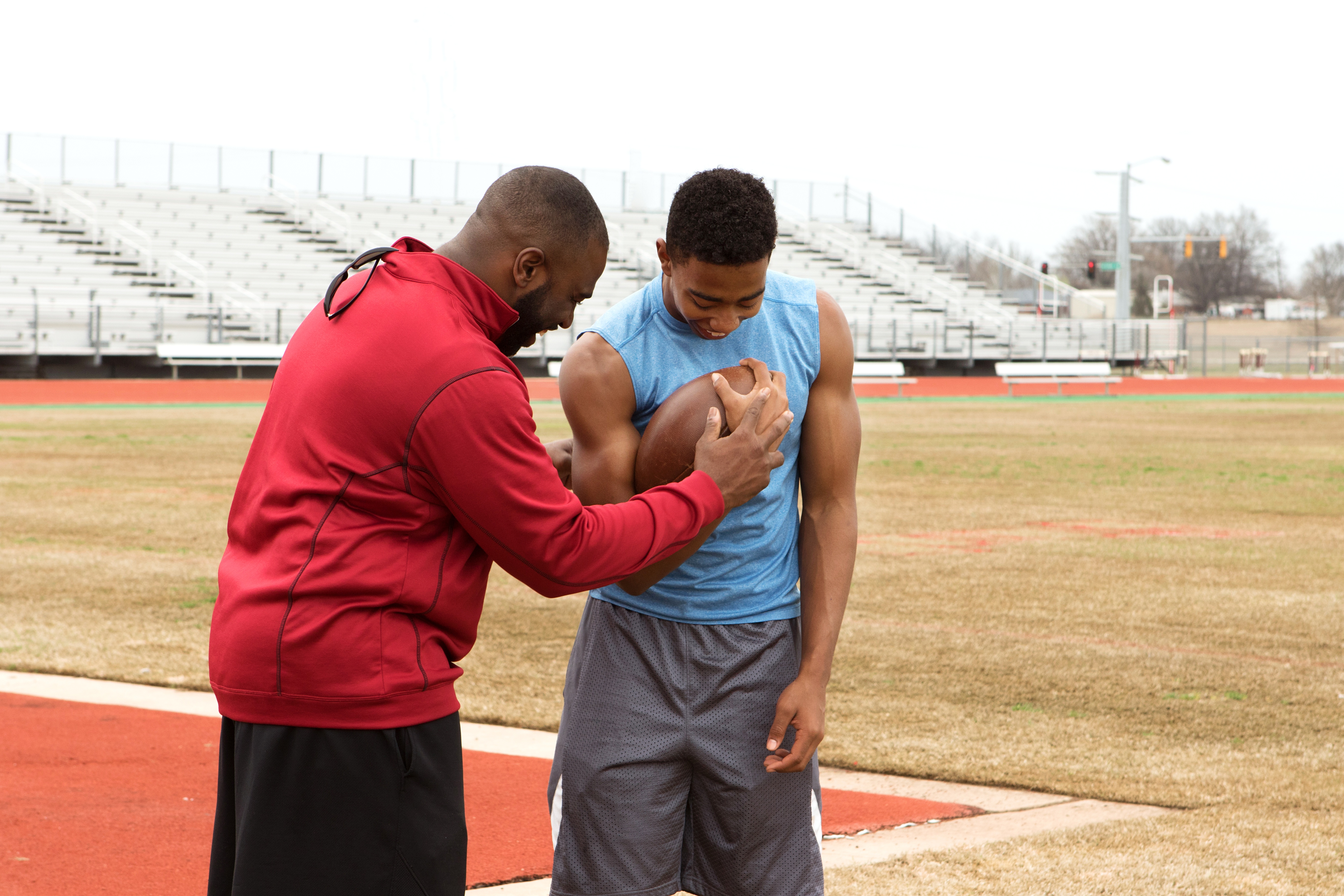
Combining talent, desire and proper instruction creates a perfect incubator for greatness. Private coaching and sports clinics can help kids improve their skills, pursue higher levels of competition and increase their self-esteem and confidence. But one-on-one coaching sessions can be extremely expensive. Remember the dad who tracked all his kids’ sports expenses? In 2011, he spent $1,450 on private coaches and personal trainers. Here’s the breakdown:
- Sessions (5) with personal baseball coach: $250
- Personal Trainer: $500
- Personal Trainer (Batting) $350
- Personal Trainer (Throwing) $350
These costs are simply out of the question for many families attempting to make ends meet. But there are programs that offer free instructional clinics to give all children an equal opportunity at additional mentorship. Chevy Youth Baseball Clinics are making a big difference in the lives of youth baseball players in communities across the United States. Over 1,500 Chevrolet dealerships are funding a projected 187 clinics in 2016 that will give participants the chance to receive training from current Major and Minor League players at no cost.
The same model could be applied to a marketplace that connects youth players with qualified private coaches who have been compensated by outside sponsors, like Chevy. This model would give companies an opportunity to practice corporate social responsibility while helping reshape the way children learn and coaches find employment.
Final Thoughts

One of the first things parents teach their children is the value of sharing. By investing time, money and passion into projects like these, low-income youth would benefit immensely. And they wouldn’t be the only ones. Any family with children in sports could benefit from lower equipment, transportation and coaching costs.
With peer-to-peer exchange, there would be less waste, fewer cluttered garages, and more children leading active lifestyles. Removing barriers to youth sports would also benefit professional leagues that are seeing a decrease in youth players. More kids participating in organized sports means the potential development of more high-level athletes, and definitely more lifetime fans.
Even though these peer-to-peer marketplaces could theoretically make sports more accessible to low-income children, changing the way we consume is difficult. Everyone references Airbnb as the posterchild for sharing economy success, and it’s hard to think that any small idea could somehow reach a $25 billion valuation. But Airbnb didn’t grow over night. It takes time for innovative ideas to take hold. So let’s start changing the world of youth sports now!
I will begin exploring the real potential of these marketplace concepts when I begin my Master’s Thesis Project at the University of San Francisco in September 2016. I would love to hear your thoughts in the comment section below.
